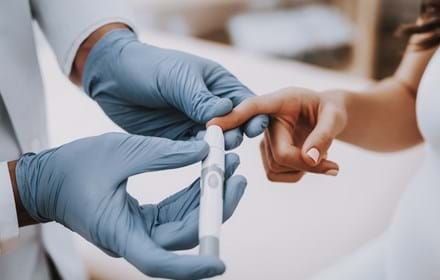
Researchers find link between weak and strong cells bonding to boost insulin production for people living with type 2 diabetes
Report improves understanding about insulin producing cells and how type 2 diabetes develops.
The results of a recent study have found that ‘weak’ cells bonding with their more mature ‘stronger’ cellular counterparts can boost the body’s production of insulin.
Researchers said the findings can help improve understanding around the processes leading to the development of type 2 diabetes.
Type 2 diabetes can develop when β-cells cannot release enough insulin – a tightly controlled process requiring hundreds of such cells clustered together to co-ordinate their response to signals from food, such as sugar, fat and gut hormones.
An international research team – led by scientists at the University of Birmingham –discovered that immature β-cells were able to overcome their relative deficiencies by partnering with ‘stronger’ counterparts to drive insulin release.
In a report recently published in Nature Communications, the researchers found that subtle differences in the levels of certain proteins found only in β-cells, and more broadly, differences in β-cell maturity, contributed to how clusters of insulin-producing cells, known as islets, function.
Study author David Hodson, Professor of Cellular Metabolism, at the University of Birmingham, said: “Our research shows that differences in β-cell maturity, defined using protein levels, are needed across the islet for proper insulin release. Unexpectedly, increases in the proportion of mature β-cells, is associated with islet failure. It seems that, rather like society, the islet needs cells with all ages to be properly functional.
“Redressing the balance between immature and mature β-cells restores islet function under conditions of metabolic stress – an excess of sugar and fat in the diet – providing evidence that both ’weak’ and ‘strong’ β-cells could contribute to proper islet function and insulin release.”
“This is the first glimpse that immature cells might contribute to the regulation of insulin release across the islet. Our study indicates a promising line of investigation that could be leveraged to make islets more resilient during type 2 diabetes or when generating new islets in a ‘dish’ for the purpose of transplantation.”
Normally, mature and immature β-cells co-exist within the adult islet and can be grouped into subpopulations according to differences in their levels of specific genes and proteins. Immature β-cells are generally considered to be poorly functional when viewed alone, as single cells.
Researchers found that islets containing proportionally more of specific protein levels in β-cells showed defects in cell function (including metabolism, ionic fluxes and insulin secretion).
The research team believed maintaining a mix of ‘strong’ and ‘weak’ β-cells was important for effective insulin production.
Read the report in Nature Communications
Support DRWF by making a donation here
Find out more about DRWF-funded research here
Find out more about DRWF fundraising here
For latest update follow DRWF on Facebook, Instagram and Twitter
To receive the charity’s latest bulletins as they become available, please sign up here
Read DRWF diabetes information leaflets here
Join the Diabetes Wellness Network here
Recent News


